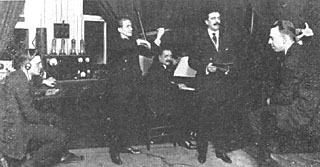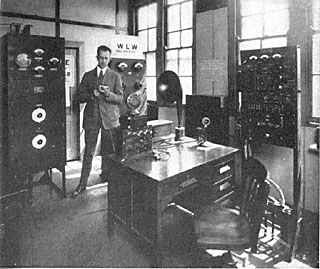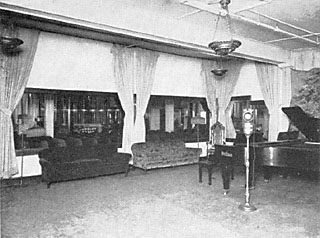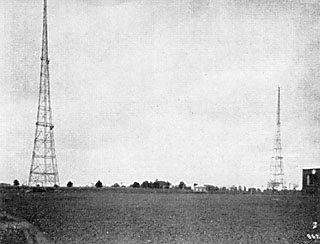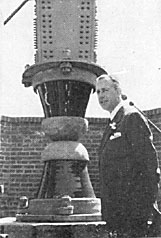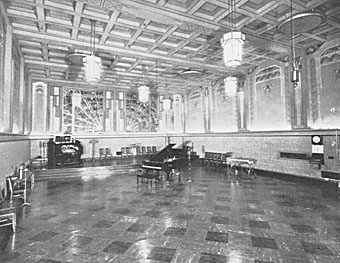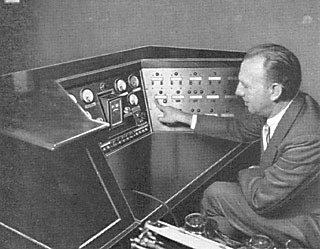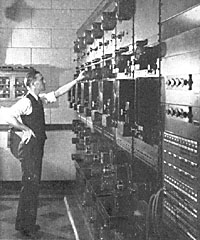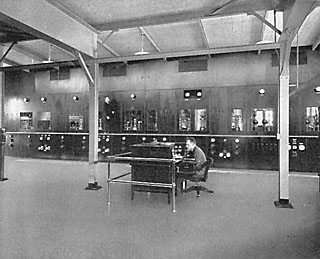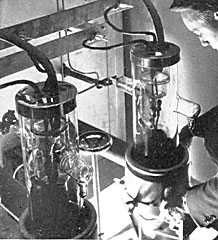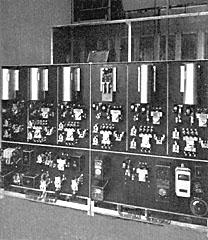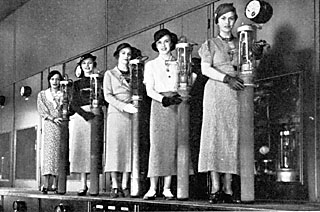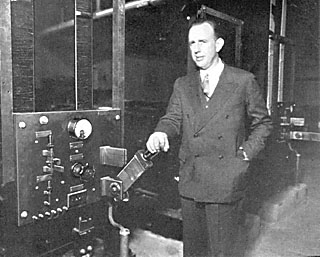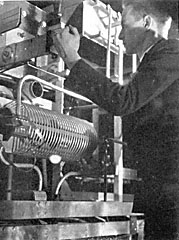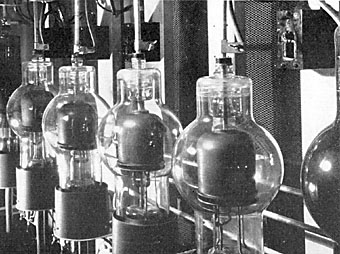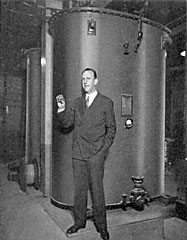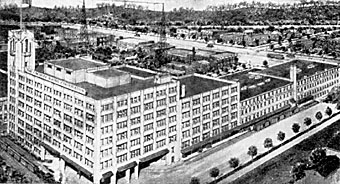 |
JIM HAWKINS'
WLW
Transmitter Page (brochure picture gallery)
This page contains pictures scanned from a WLW brochure with the text captions somewhat modified from the originals in most cases (e.g. the meaning of "today" and "deceased" now apply differently.) The brochure does not have a printing date on it, but I am guessing that it was printed in the 30s. The brochure was kindly given to me by Mr. Leroy Meier of Mount Healthy, OH, who is a friend of my wife's parents. The contents herein is provided courtesy of WLW, All rights reserved. The tower photo on the left is mine, all rights reserved. The background design is part of the cover of the brochure.
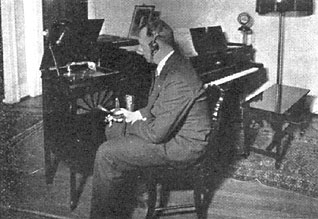 |
Above: This photograph, showing Powel Crosley, Jr., playing a phonograph record, gives one a fairly good impression of what the Crosley station was like in its infant days when broadcasting on 20 watts from the living room of Mr. Crosley's home. [Note: the old microphone in the background.]
